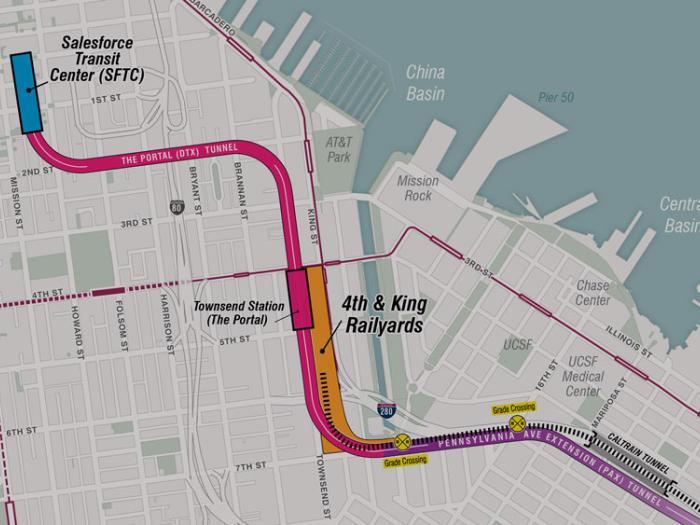
SF Railyards Planning Program
The SF Railyards is a 20-acre site at the nexus of the SoMa, Mission Bay, and Showplace Square neighborhoods. The site is located between 4th, King, 7th, and Townsend Streets, and functions as Caltrain’s northern terminus as well as an active service and maintenance yard. Prologis owns the underlying land, and Caltrain holds a perpetual easement to operate rail on the site.
The SF Railyards Planning Program coordinates multiple parallel efforts. These projects are large-scale, once-in-a-generation initiatives that could transform the area and its surrounding neighborhoods. These efforts are at different stages in their respective processes and include the projects below. Please visit the links to learn more about each project:
- Caltrain
- SF Railyards Development Project
- The Portal (a.k.a. the Downtown Extension or DTX)
- Pennsylvania Avenue Extension (PAX)
- SF Railyards Planning Program Area Map
Additional Information
Planning Commission Hearing
January 9, 2025 – Informational Presentation
- Staff Report
- Staff Presentation (Item 13, timecode 35:12 )
- Presentation Slides
Related Efforts
Contact
Mat Snyder
Senior Planner
mathew.snyder@sfgov.org
628.652.7460
Please check back for further updates! Sign-up for free email about this project. Cancel at any time.
